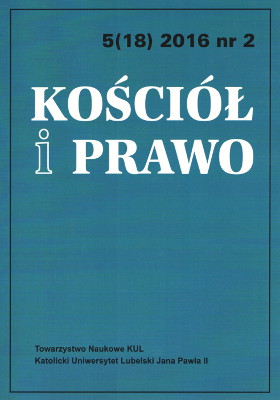Prawo do manifestowania przekonań religijnych poprzez symbole religijne w świetle wyroku w sprawie Eweida i inni przeciwko Zjednoczonemu Królestwu z 15 stycznia 2013 roku
The Right to Manifest Religious Beliefs through Religious Symbols in the Light of the Judgment Eweida and Others v. the United Kingdom from January 15, 2013
Author(s): Grzegorz SzubtarskiSubject(s): Law, Constitution, Jurisprudence, Civil Law, Canon Law / Church Law
Published by: Towarzystwo Naukowe KUL & Katolicki Uniwersytet Lubelski Jana Pawła II
Keywords: European Court of Human Rights; European Convention on Human Rights; religious symbols; manifestation of religious beliefs
Summary/Abstract: The article examines issues related to the right to manifest religious beliefs on the basis of existing European legislation, which is expressed especially in jurisprudence of the European Court of Human Rights. In particular, it highlighted the very important role of giving the answer to the question whether the behavior is a manifestation of religious beliefs, or is it only inspired by them or is only a matter of personal choice. As an example of the difficulties in answering this question, there was invoked the judgment of the European Court of Human Rights in case Eweida and others against the United Kingdom, where this issue has occupied an important place. The Court considered wearing a cross by N. Eweida and S. Chaplin as a form of manifestation of their faith. The Court rejected the position of the British courts, which reduced cross for jewelry, and his wearing considered as a personal choice of the applicants.
Journal: Kościół i Prawo
- Issue Year: 5/2016
- Issue No: 2
- Page Range: 185-203
- Page Count: 19
- Language: Polish

